Alligator Juniper: Grow & Care for Juniperus deppeana
Written by Iris
Aug 10 2021
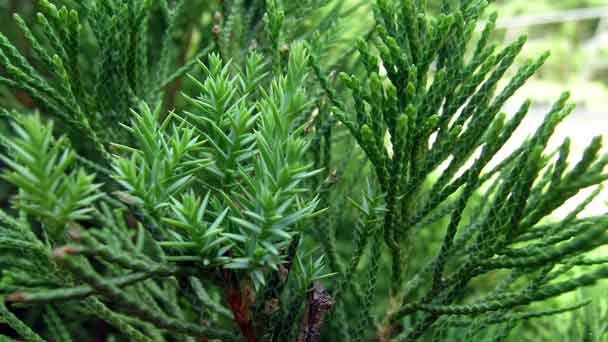
The perennial species belonging to the cupressaceae family are conifers. Flowering between January and March, this tree has a triangular top and interesting bark texture.
Planting Instructions: Fill a container with Alligator Juniper seed starting mix to about ½ inch from the top. Place your Alligator Juniper seeds 1 inch to 1 ½ inches below the soil surface. Gently water the alligator juniper seeds to keep moist, not soaking wet. Germination may occur in 1 week or as long as 3 months (depending on the species). Place the seed container on a heat mat under growing light. Keep your growing lights on 14 hours per day. Keep your heat mat on 24 hours per day. Once your Alligator Juniper seeds germinate, move each seed into its own container under the growing lights and on the heat mat. Keep your seedlings indoors for 2-3 months before transplanting outdoors in the spring (May to June).
Outdoor Planting: If your Alligator Juniper seeds do not require stratification: the best time to plant Alligator Juniper tree seeds outdoors is after the last frost in your area (spring). In the Northern states – the best time to plant seeds outdoors is from May to June. If your Alligator Juniper seeds require pretreatment: you should plant your seeds outdoors before the ground freezes in your area (late September to early November). Your Alligator Juniper will naturally stratify during the cold winter. Germination usually occurs in May or during the spring season.
Cut an 8- to 10-inch long stem off of the juniper with pruning shears. Choose a healthy branch that grew in the summer that has plenty of needles growing at the tip.
Remove the needles on the bottom 2 inches of the cut branch. Make 1- to 2-inch slits through the outer layer on each side of the bared stem with a sharp knife. This allows the Alligator Juniperbranch to absorb more water and hormone for root growth.
Place about 1 teaspoon of rooting hormone in a dish. Dip the end of the juniper cutting in the hormone and roll the bare end in it. Coat it thoroughly and shake off any excess.
Stick the hormone-covered section of the branch into a hole in the prepared planter. Firm the potting mix around the cutting, keeping it upright. Mist the medium until it feels moist all the way through.
Place four small 12-inch stakes around the edges of the planter. Cover the Alligator Juniper with plastic film to maintain a consistent humidity. Sit the planter in a spot that receives indirect light and a temperature range of 60 to 65 degrees Fahrenheit. A heating mat placed under the planter at around 70 degrees Fahrenheit increases the chance of root development.
Mist the cutting daily. Start checking for root development with a very gentle tug after four weeks. Transplant each rooted juniper cutting into a 4-inch pot.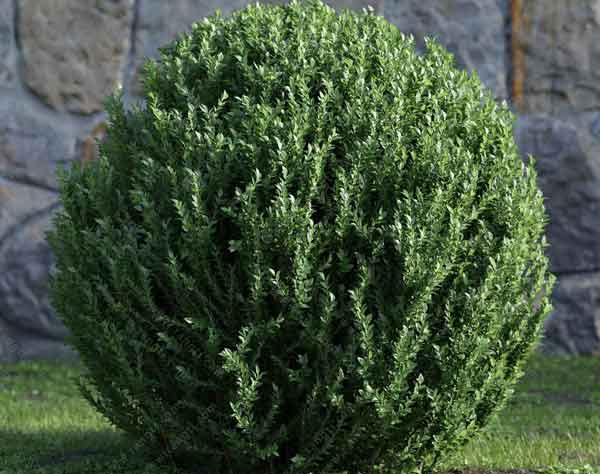
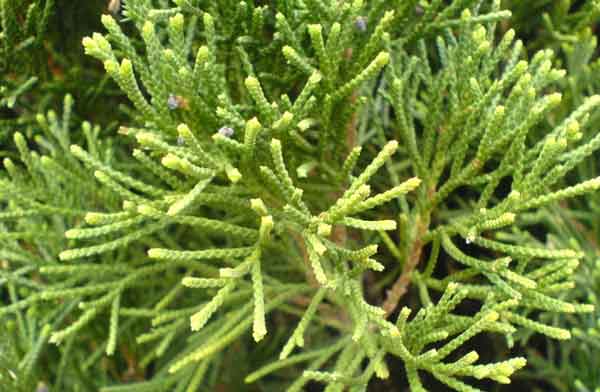
Common pests of alligator juniper include marsupials, spruce tetragmites, and juniper scales. Insecticides are an effective way to control serious infections of any of these common pests, but the best form of control is prevention. Get in the habit of checking Alligator Juniper regularly for pests so that any pests can be detected and managed early.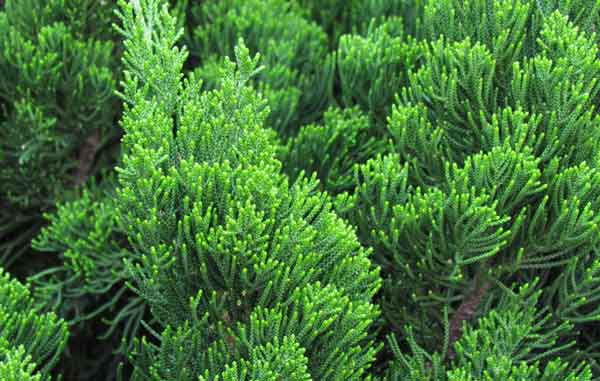
Alligator Juniper var. Deppeana
Alligator Juniper var. pachyphlaea
Alligator Juniper var. robusta
Alligator Juniper var. sperryi
Alligator Juniper var. zacatecensis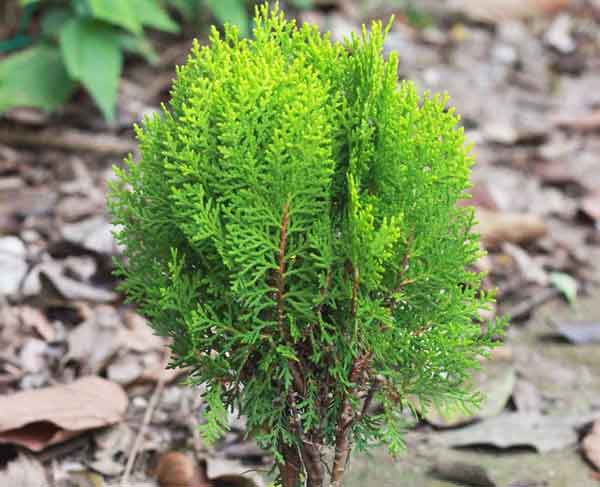
How to Grow Alligator Juniper (Juniperus deppeana)How to Care for Alligator Juniper (Juniperus deppeana)Varieties of Alligator Juniper (Juniperus deppeana)Alligator Juniper (Juniperus deppeana) FAQ
How to Grow Alligator Juniper (Juniperus deppeana)
Steps for Alligator Juniper (Juniperus deppeana) Propagation with Seeds
Indoor Planting: If your Alligator Juniper seeds require stratification or scarification – do the recommended pretreatment before planting indoors.Planting Instructions: Fill a container with Alligator Juniper seed starting mix to about ½ inch from the top. Place your Alligator Juniper seeds 1 inch to 1 ½ inches below the soil surface. Gently water the alligator juniper seeds to keep moist, not soaking wet. Germination may occur in 1 week or as long as 3 months (depending on the species). Place the seed container on a heat mat under growing light. Keep your growing lights on 14 hours per day. Keep your heat mat on 24 hours per day. Once your Alligator Juniper seeds germinate, move each seed into its own container under the growing lights and on the heat mat. Keep your seedlings indoors for 2-3 months before transplanting outdoors in the spring (May to June).
Outdoor Planting: If your Alligator Juniper seeds do not require stratification: the best time to plant Alligator Juniper tree seeds outdoors is after the last frost in your area (spring). In the Northern states – the best time to plant seeds outdoors is from May to June. If your Alligator Juniper seeds require pretreatment: you should plant your seeds outdoors before the ground freezes in your area (late September to early November). Your Alligator Juniper will naturally stratify during the cold winter. Germination usually occurs in May or during the spring season.
Steps for Alligator Juniper (Juniperus deppeana) Propagation with Cuttings
Fill a clean 1 gallon planter with a soil-less potting medium. Make a 1-inch-diameter hole for each Alligator Juniper cutting.Cut an 8- to 10-inch long stem off of the juniper with pruning shears. Choose a healthy branch that grew in the summer that has plenty of needles growing at the tip.
Remove the needles on the bottom 2 inches of the cut branch. Make 1- to 2-inch slits through the outer layer on each side of the bared stem with a sharp knife. This allows the Alligator Juniperbranch to absorb more water and hormone for root growth.
Place about 1 teaspoon of rooting hormone in a dish. Dip the end of the juniper cutting in the hormone and roll the bare end in it. Coat it thoroughly and shake off any excess.
Stick the hormone-covered section of the branch into a hole in the prepared planter. Firm the potting mix around the cutting, keeping it upright. Mist the medium until it feels moist all the way through.
Place four small 12-inch stakes around the edges of the planter. Cover the Alligator Juniper with plastic film to maintain a consistent humidity. Sit the planter in a spot that receives indirect light and a temperature range of 60 to 65 degrees Fahrenheit. A heating mat placed under the planter at around 70 degrees Fahrenheit increases the chance of root development.
Mist the cutting daily. Start checking for root development with a very gentle tug after four weeks. Transplant each rooted juniper cutting into a 4-inch pot.

How to Care for Alligator Juniper (Juniperus deppeana)
Light
True to its native habitat, the alligator juniper is a sun-loving tree that requires full sun in order to thrive. Alligator junipers cannot grow in the shade, and growth may be stunted in areas that only receive partial sun.Soil
Alligator Juniper trees tolerates a wide range of soils, including clay, however prefer a well-drained sandy clay or loam. As with so many other ornamental plants, constantly soggy or wet soil can be problematic. So make sure to plant your Alligator Juniper in a well-drained site. Alligator Juniper trees grow best in a moderately acid to slightly alkaline soil ranging between 6.0 to 7.5 on the pH scale. Most average garden soils fall between a pH range of 6.0 to 7.0.Water
The Alligator Juniper is considered a drought-tolerant tree with low water requirements. Mature alligator juniper should not need additional watering, however, seedlings and saplings may need watering during dry periods. It is important to note that Alligator Juniper is prone to overwatering. Making sure trees are planted in well-drained soil is important to prevent this.
Temperature and Humidity
Alligator Juniperis not an overly hardy juniper and can only tolerate freezing temperatures for a short period of time. In extreme cases, the alligator juniper can withstand temperatures as low as -8 degrees Celsius (or 17 degrees Fahrenheit) when fully dormant. These junipers grow best in USDA zones 7 through 9.Fertilizer
Like most juniper trees, the Alligator Juniper does not need to be fed heavily. However, once established, Alligator Juniper can benefit from annual feeding with slow-release bush and tree fertilizer. Alternatively, alligator juniper also responds well to organic fertilizers and soil amendments. Feed the Alligator Juniper in late winter or early spring as the tree is coming out of hibernation to help kick-start their growing season.Pruning
Alligator Juniper are hardy shrubs that can take severe pruning, but it is possible to kill them by pruning them back too far. Alligator Juniper can be pruned at any time, but do heavy pruning in winter or early spring before growth starts. If the Alligator Juniper is severely overgrown, it may be preferable to replace it.Pests and Diseases
Alligator Juniper is susceptible to many common pests and diseases. Common juniper diseases include shoot and leaf blight, and cedar rust. Microbicides can help proactively protect alligator juniper from such diseases, but they should be used before infection appears. These common diseases can be controlled by timely pruning any dead or diseased branches.Common pests of alligator juniper include marsupials, spruce tetragmites, and juniper scales. Insecticides are an effective way to control serious infections of any of these common pests, but the best form of control is prevention. Get in the habit of checking Alligator Juniper regularly for pests so that any pests can be detected and managed early.

Varieties of Alligator Juniper (Juniperus deppeana)
There are five varieties of alligator junipers:Alligator Juniper var. Deppeana
Alligator Juniper var. pachyphlaea
Alligator Juniper var. robusta
Alligator Juniper var. sperryi
Alligator Juniper var. zacatecensis

Alligator Juniper (Juniperus deppeana) FAQ
Are alligator juniper berries edible?
The seed cones look like berries and most are edible. All of the species of juniper grow berries but some are considered just too bitter to eat. Many also have medicinal properties. deppeana (wild juniper or alligator juniper which drops its waxy berries), J.How fast do alligator junipers grow?
This characteristic greatly enhances the ability of alligator juniper to survive in harsh, arid environments. A diameter growth rate of approximately 0.6 inch (1.5 cm) per decade is typical for young trees, with growth slowing to 0.4 inch (0.1 cm) per decade after the tree reaches 170 years of ageWhere do alligator junipers grow?
Native to Mexico and the southern United States, the alligator juniper (Juniperus deppeana) is a species of juniper tree that is characterized by its unique cracked bark that resembles alligator skin.Latest Updated
- Benefits of Bugleweed - 7 Science-backed Health Benefits
- Bugleweed Dangers & Side Effects - Is It Poisonous?
- How to Plant Evergreen Trees - What You Should Know
- When to Plant Evergreens - Grow Guide for Evergreen Trees
- 12 Wonderful Evergreen Shrubs for Your Garden
- 12 Popular Evergreen Plants with Pictures for Beginners
- When And How To Prune A Lilac Bush Like a Pro
- How to Grow & Care for Lilac Vine (Hardenbergia Violacea)
- Japanese Lilac Tree (Syringa Reticulata) Care & Propagation Guide
- Shumard Oak Pros and Cons - What to Know
Popular Articles
- Winter maintenance of Antirrhinum Majus
- How to Grow Terminalia Mantaly Tree
- How to Grow and Care for Crossostephium Chinense
- How to grow Antirrhinum Majus in spring
- Peristeria Elata (Dove Orchid) Profile: Info & Care Guide
- Underwatered Snake Plant (Sansevieria Trifasciata) - Signs And How To Fix
- How to Care for Brazilian Jasmine Plant (Mandevilla Sanderi)
- How to Grow & Care for Graptopetalum Purple Delight in Summer
- Rosa Chinensis (China Rose): Plant Growing & Care Tips
- How to Care for Baby Sun Rose (Aptenia Cordifolia)